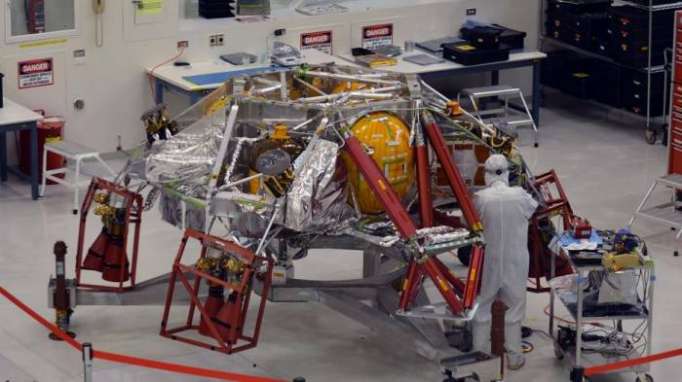The Mars 2020 rover is coming together at the Spacecraft Assembly Facility High Bay 1 at NASA's Jet Propulsion Laboratory (JPL) in Pasadena, California. There, technicians are working on the rover's descent stage, "a rocket-powered 'sky crane' that will lower the rover to the planet's surface," according to a March statement from NASA.
This sky-crane system also dropped the agency's Curiosity rover onto the Martian surface in August 2012.
Engineers and technicians will be working on the 2020 rover for the next year and a half, eventually adding subsystems like avionics, power, telecommunications, thermal systems and navigation. Overall, they'll have to build the rover itself as well as its cruise stage, aeroshell and descent stage. The propulsion systems were installed earlier this year on the cruise and descent stage, NASA officials said.
"Parts of this mission are coming from the other side of the world, and some are coming from just 'down the street' in Pasadena, and some are coming from literally down the street a couple of buildings away," David Gruel, ATLO manager for Mars 2020 at JPL, said in the statement.
NASA expects to be working on the rover itself by this fall, Gruel said. The 2020 mission will build on previous knowledge from NASA's Curiosity rover and other Mars Exploration Program missions.
If all goes according to plan, the Mars 2020 rover will assess the geology of its landing site on Mars (which has still not been announced), determine habitability of the Martian environment, search for signs of past life and assess natural resources and dangers for potential human missions to the Red Planet. For example, the car-size rover will carry an instrument designed to generate oxygen from the Red Planet's thin, carbon-dioxide-dominated atmosphere.
The six-wheeled robot will also collect samples of rock and soil and leave them on the planet in sealed tubes for future Mars missions to bring back to Earth.
The rover is scheduled to launch in July 2020 aboard an Atlas V 541 rocket from Space Launch Complex 41 at Cape Canaveral Air Force Station in Florida.
Space.com
More about: #NASA
















































